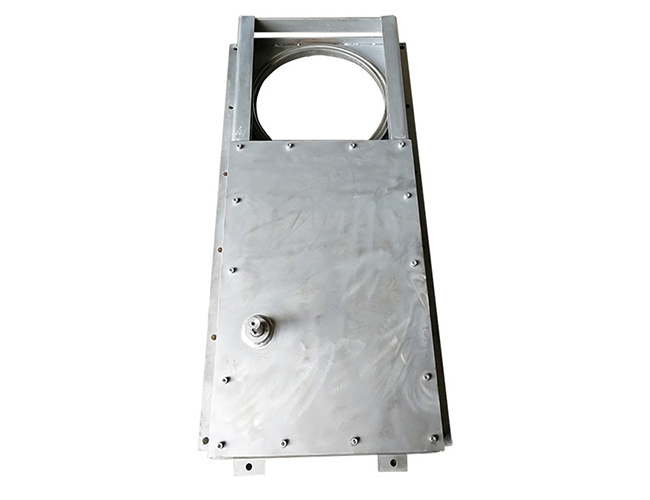


JAVA Metal has several sets of advanced sheet metal processing equipment, which can customize and process all kinds of sheet metals.
Sheet metal parts are products processed by sheet metal technology. Sheet metal parts are produced by filament power winding, laser cutting, heavy processing, metal bonding, metal drawing, plasma cutting, precision welding, roll forming, sheet metal bending, Made by die forging and water jet cutting.

Sheet metal parts have the characteristics of light weight, high strength, electrical conductivity (can be used for electromagnetic shielding), low cost, and good mass production performance, and have been widely used in electronic appliances, communications, automotive industry, medical equipment and other fields.
The equipment required for sheet metal processing includes shearing machine, CNC punching machine, laser, plasma, water jet cutting machine, compound machine, bending machine and various auxiliary equipment.
The processing technology of sheet metal parts includes:
1. Blanking:
There are many ways of blanking, which refers to the process of laser cutting or CNC punching and shearing. NC CNC blanking and laser cutting blanking can be used for thicker and more complex sheet metal processing parts; shears can cut out workpieces with larger shapes, lengths and widths; punching machines can use punching machines in batches to cut workpiece shapes and holes. processed.
2. Punching holes
Punching is also called flanging, which refers to the process of using a die to form a round hole on the workpiece on an ordinary punch or other stamping equipment. It is to draw a hole of a specified size on the pre-punched hole, which can make the teeth tapped by the workpiece stronger. It is generally used on workpieces with a thickness of less than 1.5mm.
3. Pressure riveting
Generally, it refers to the process of firmly riveting and crimping riveting studs, riveting nuts, riveting screws, etc. on the workpiece by using a punch or hydraulic riveting machine.
4. Bending
Bending is a process in which a workpiece is formed by a bending machine with a bending machine and related bending dies, which can strengthen the strength of the workpiece to a certain extent.
5. Welding
Common types of welding processes include two-shielded welding, argon arc welding, electric welding, robot welding and butt welding, etc. The process is mainly to weld 2 or more parts together to achieve the purpose of processing finished products or assembled parts; Or the edge seam of a single part needs to be welded to make the bending edge precise to increase the edge folding strength.
6. Surface treatment
The surface treatment includes phosphating coating powder spraying, electroplating colorful zinc, chromate, baking paint, oxidation, etc. After the phosphating coating, the workpiece can be electrostatic powder sprayed, which is suitable for cold-rolled sheets and galvanized sheets; electroplating colorful zinc is generally used for cold-rolling. Surface treatment of plates and machined parts; chromate and oxidation are generally used for surface treatment of aluminum and aluminum profiles; surface treatment is to make the sheet metal parts look beautiful as a whole and to protect themselves. , The specific surface treatment method is determined according to the customer's material requirements.
7. Assembly
It is to assemble multiple parts or components together according to the requirements of the drawings to form a complete workpiece product. The assembled workpiece may be a finished product or a semi-finished product.
Common materials for sheet metal parts:
1. Ordinary cold rolled sheet
Cold-rolled sheet refers to the continuous rolling of steel ingots into steel coils or sheets of required thickness through a cold rolling mill. The surface of the cold-rolled sheet has no protection, and is easily oxidized when exposed to the air. Especially in a humid environment, the oxidation speed is accelerated, and dark red rust appears. The surface should be painted, electroplated or otherwise protected when in use.
2. Galvanized steel sheet
The base material of galvanized steel sheet is a general cold-rolled steel coil, which becomes an electro-galvanized product after degreasing, pickling, electroplating and various post-treatment processes in a continuous electro-galvanizing production line. Galvanized steel sheet not only has the mechanical properties and similar workability of general cold-rolled steel sheet, but also has superior corrosion resistance and decorative appearance. It has great competition and substitution in the market of electronic products, home appliances and furniture. For example, galvanized steel is commonly used in computer cases.
3. Hot dip galvanized steel sheet
Hot-dip galvanized steel coil refers to the semi-finished product after hot-rolling pickling or cold-rolling, after cleaning, annealing, and immersing in a molten zinc bath with a temperature of about 460 ° C, so that the steel sheet is plated with a zinc layer, and then quenched and tempered. Flattened and chemically treated. Hot-dip galvanized steel material is harder than galvanized steel material, has poor ductility, thicker zinc layer, and poor weldability.
4. Stainless steel SUS301
The content of Cr (chromium) is lower than that of SUS304, and the corrosion resistance is poor, but it can obtain good tensile force and hardness after cold working, and has good elasticity. It is mostly used for shrapnel springs and anti-EMI.
5. Stainless steel SUS304
One of the most widely used stainless steels, because it contains Ni (nickel), it is richer in corrosion resistance and heat resistance than steel containing Cr (chromium), has very good mechanical properties, has no heat treatment hardening phenomenon, and has no elasticity.
Can customize cold-rolled sheet, hot-rolled sheet, galvanized sheet, copper sheet, aluminum alloy, stainless steel and other material processing services.
Main Advantages
Saw-cut length error is small
With the excelsior detail processing, there are no burr and flashing of the processing site.
There are no chromatic difference, no bubble and free from pinhole porosity of the external surface treatment.